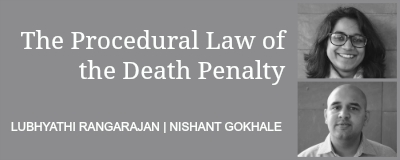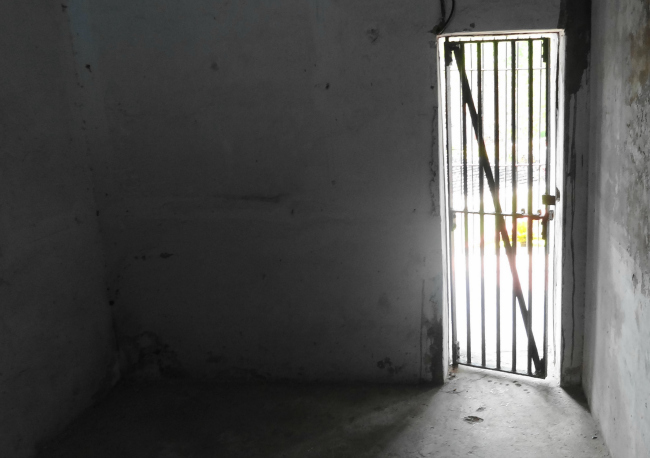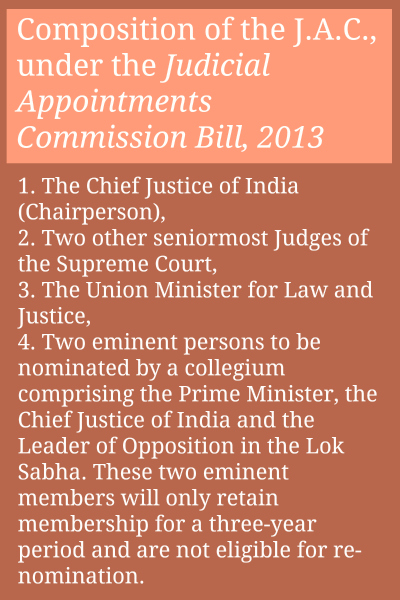 The President of India exercises mercy powers under Article 72 of the Constitution of India and the governors do it under Article 161. Historically seen as private acts of grace, clemency powers are now constitutionally guaranteed rights and consequently, must be exercised with a great degree of responsibility.
The President of India exercises mercy powers under Article 72 of the Constitution of India and the governors do it under Article 161. Historically seen as private acts of grace, clemency powers are now constitutionally guaranteed rights and consequently, must be exercised with a great degree of responsibility.
Does any relief remain after the President or a governor exercises these powers? Or are all remedies exhausted? The Supreme Court of India has in several decisions analysed these questions and answered that the courts have the power to judicially review the exercise of mercy powers but that this power is extremely limited. In exercise of their powers of judicial review, the courts do not sit in appeal over the decisions of the President or governors but can only examine the manner and materials relied upon to reach the conclusion.
In Shatrughan Chauhan v. Union of India and Others, the Supreme Court considered and consolidated much of the jurisprudence on the judicial review of mercy powers in India in relation to prisoners on death row. The Court held that the exercise of powers under Articles 72 and 161 are essentially executive actions and therefore amendable to judicial review. It held that while the decision of the President or a governor is per se beyond judicial scrutiny, what can be reviewed is the material that was relied on to arrive at the conclusion. The scope of the judicial review of decisions taken by high constitutional functionaries has to be balanced with the right of prisoners to seek executive clemency.
The Law Commission of India in its 262nd Report has listed, after an analysis of various judgments of the Supreme Court, the various circumstances in which the judicial review of the exercise of mercy powers is permissible. This includes (1) where the power is exercised without being advised by the government, (2) where there has been a transgression of jurisdiction by a governor or by the President, (3) where there is non-application of mind or mala fides, (4) where power has been exercised on political considerations, (5) where there is arbitrariness, and (6) where irrelevant considerations have been considered or where relevant material has been left out.
The file’s journey
To find out about what has been considered and what has been left out, it is necessary to track the movement of the mercy petition file. While procedures in individual cases may vary according to the law under which a person is convicted, The prisoner’s petition usually finds its way to the Home department of the concerned state. The state government then gives its advice to the Governor, who then decides the petition based on this recommendation. Thereafter, the file is sent to the Union Home Ministry which in turn sends its recommendations to the President of India and then the President herself takes a decision. Often, this involves a long chain of correspondence between various government agencies including prisons. Usually, with a change in government, the files are sent back by the President for consideration by the new government. While the Supreme Court has recommended that this entire process should be concluded within three months, in many cases, it has taken over a decade.
The objective is to present a full picture to the Governor and the President so that they may decide on the plea beyond the strictly judicial plane. But often, there are lapses in procedure or important materials are either accidentally or deliberately left out and irrelevant factors are considered.
Errors in exercise of mercy jurisdiction
For instance, in Epuru Sudhakar’s Case, the Supreme Court set aside a pardon granted by the Governor because extraneous circumstances, such as the convict “belonging to an upper caste” and “being a good Congress worker”, had been considered.
In Shankar Kisanrao Khade’s Case, the Supreme Court admitted that Dhananjoy Chatterjee’s case had been wrongly decided. He was hanged in 2004 after the President rejected his mercy petition. The court had not considered the mitigating circumstances properly. Much emphasis was laid on the circumstances of the crime rather than the circumstances of the criminal. In its 262nd Report, the Law Commission also said that the Governor rejected Dhananjoy Chatterjee’s petition without taking into consideration the mitigating circumstances.
The Law Commission report also discussed Bandu Baburao Tidke’s case, where the President commuted the death sentence to life imprisonment in 2012 when the prisoner had actually died in jail in 2007. This incident demonstrated the complete non-application of mind and the failure to consider or even call for records from the prison where the prisoner was lodged in, as they would have shown that the prisoner was already dead.
Is there a right to judicial review of a decision made in a second mercy petition?
Most recently, Yakub Memon’s case seemed to change the jurisprudence to some extent. It may even be seen as having curtailed the judicial review of mercy petitions. Initially, Yakub Memon’s brother had filed a mercy petition and it was rejected in 2014. After a review petition was dismissed in 2015, a warrant was issued fixing a date for execution. After that, a mercy petition was filed before the Governor and thereafter before the President. The President rejected the mercy petition around 10 pm on the night before the date on which the execution had been scheduled for 7 a.m. While a stay was sought on the execution so that he could seek the judicial review of the rejection of his mercy petition, the Supreme Court refused to stay it. It held that since the rejection of the first mercy petition in April 2014 had not been challenged, the prisoner could not avail of the period of 14 days after the rejection of his second mercy petition. In effect, this deprived him of the opportunity for the judicial review of the rejection of his mercy petition. The decision seems to be at odds with the decision in Shatrughan Chauhan’s Case, which was decided by a bench of the same strength. Therefore, the question of the maintainability of a second mercy petition and the right to the judicial review of a decision made in a second mercy petition needs to be adjudicated by a larger bench.
The problem of secrecy
There have also been cases where the President of India has conditionally commuted death sentences. Sometimes, these conditions may be excessively harsh and would amount to a punishment greater than what the courts have the power to prescribe. Previously, several Presidents would record specific reasons on file for taking the decision to accept or reject the mercy petition. Of late however, the Presidents only signs off on the government’s recommendation and no reasoning is provided. While it is not open to question the final decision, it is important to ensure that the decisions taken by the highest of constitutional authorities are not whimsical, are based on relevant material, and are reasoned decisions. In the constitutional set-up, it should be noted at this point that governors and the President act only on the advice of the government and cannot act independently.
Effective checks on executive failures
In view of executive failures, some of which have been illustrated above, we can see the need for stringent judicial review in cases where the death penalty has been imposed. While the judiciary cannot provide a foolproof solution, it acts as another check where the consequences of the punishment are final and irreversible. It is also necessary that the judiciary, in reviewing the executive action, fix responsibility on erring officials in the executive so that there is accountability for deliberate or negligent omissions in placing materials before a governor or the President. The executive should also lay down norms for decisions in mercy petitions and not only in capital punishment cases. Currently, guidelines only exist on mercy petitions in death sentence cases. These guidelines however, do not take into account recent judicial decisions. After all, under the law laid down by the Supreme Court in Kehar Singh’s case, it is not for the judiciary to law down guidelines for the exercise of mercy powers. The judiciary can only step in to ensure that the powers are “exercised in the aid of justice and not in defiance of it.”
(Nishant Gokhale and Lubhyathi Rangarajan are Associates at the Death Penalty Litigation Clinic, National Law University, Delhi. The Clinic represented was an intervenor in Yakub Memon’s case. The views expressed in this article are those of the authors alone.)






